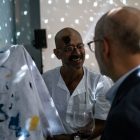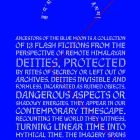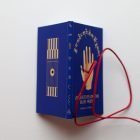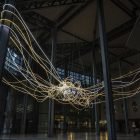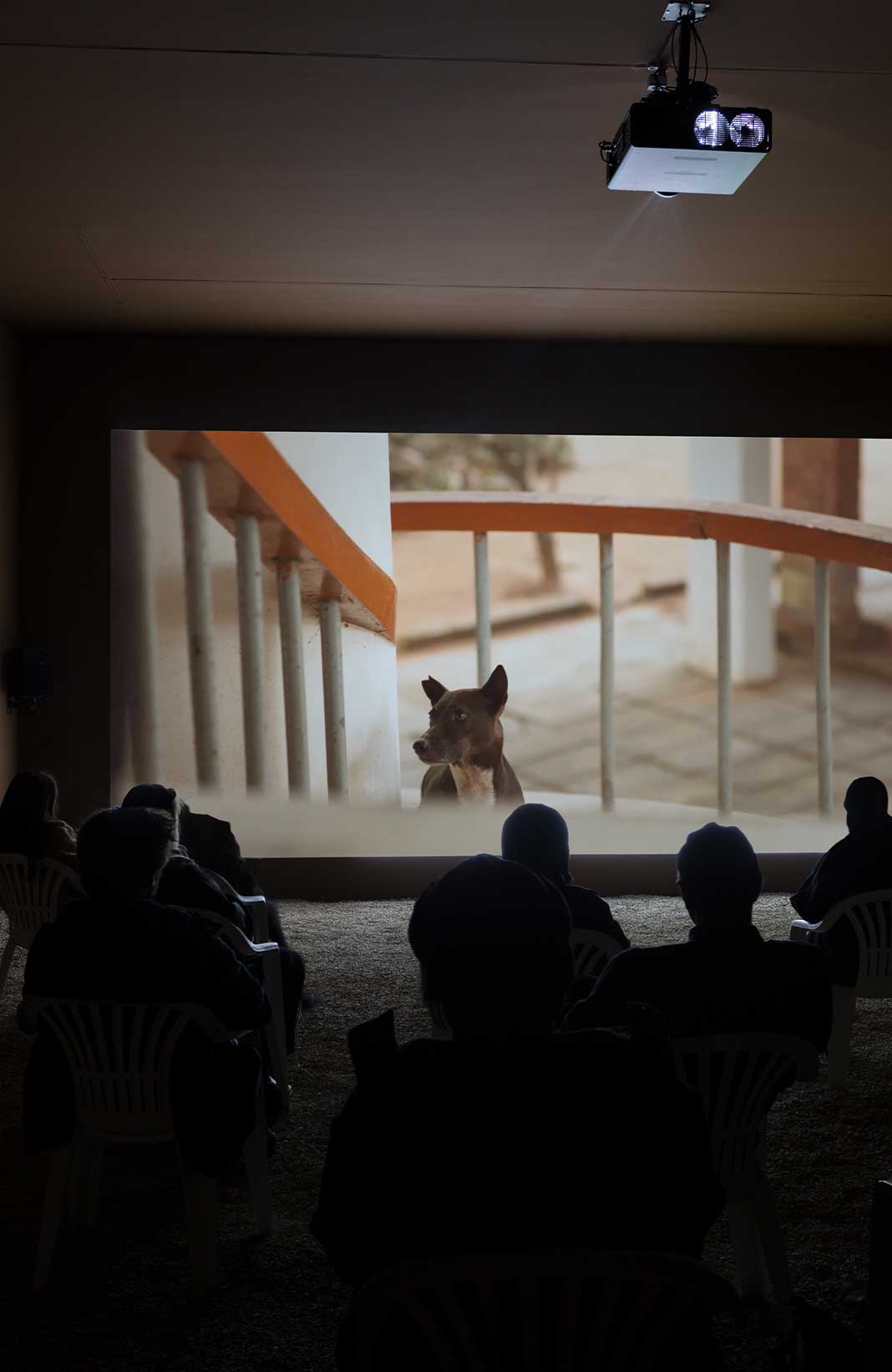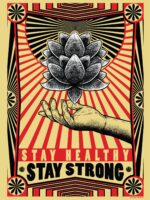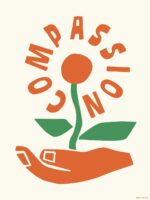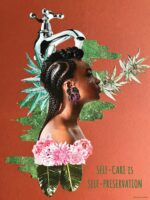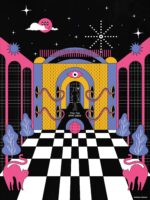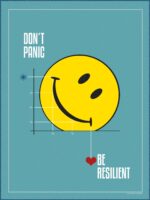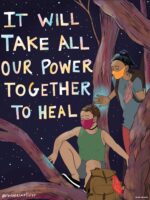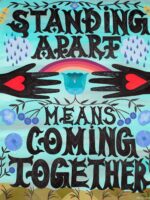Day 1 Summit Highlights Day 1 Summit Highlights
Philanthropy, Activism & Wellbeing, Featuring Shelly Tygielski Philanthropy, Activism & Wellbeing, Featuring Shelly Tygielski
The Wellbeing Summit for Social Change - Acting Responsibly for our Planet The Wellbeing Summit for Social Change - Acting Responsibly for our Planet

INTRODUCTION
Recommendations from our pro bono partner, UreCulture
At The Wellbeing Project, we understand the urgent need to preserve our natural environment to protect the health and wellbeing of current and future generations. We believe that the health and wellbeing of the planet is intrinsically connected to the health and well-being of all people, and that social and economic sustainable development will only succeed if environmental components achieve their stability such that communities around the world can experience a good quality of life.
We are committed to planting a seed to bring sustainability to the core of our objectives, and are beginning the process of embedding this into event planning together with the pro bono consultancy of one of our specialist partners, UreCulture. For our first edition we are carrying out an audit of our carbon and circularity footprint, which will help build our future sustainability plan. The results of the audit will be presented transparently after the Summit and donations in compensation for this impact will be carried out. Our sustainability plan will include a detailed sustainability footprint audit, including creative and innovative solutions to reduce our negative impact and a reporting process which involves carbon circularity and social footprints. Our ambition for TWBS24 is to align with best practice in sustainability from the outset of our planning.
HOW CAN YOU MINIMIZE YOUR ENVIRONMENTAL IMPACT?
WHILST IN BILBAO
Intercity Travel
The venues for the conference are all close together, so most journeys should be possible by walking, for most participants. If you do need to use a vehicle at some point, please choose public transport rather than taxis where you can (although of course, we understand this will not be possible for everyone).
Your Hotel Stay
– One of the largest parts of a hotel’s carbon footprint is the daily washing of towels and linen. Ask your hotel for their policy on this, and whether they have the option to only wash things on request rather than washing everything every day by default. You can also leave the “Do Not Disturb” sign on your door when out to prevent unnecessary washing.
– Bring your own toiletries, and leave those mini bottles of soap and shampoo in the room! Hotels generate huge amounts of waste from single-use toiletries.
– Be sensible in your use of energy and water, like you would at home. It’s tempting to take extra-long showers, leave lights and appliances on etc. when we’re staying away from home, but the impact on the climate is still the same.
– Ask your hotel about their environmental policies and make it clear these issues are important to you as a guest.
DURING THE WELLBEING SUMMIT
Food and Drink
– Look for food options that are lower-carbon where possible – that means reducing meat and dairy, and seeking out less processed and more locally-produced food where possible.
– Avoid the use of single-use plastics and avoid buying plastic water bottles. 80 percent of plastic water bottles end up in landfills and it takes up to 1,000 years for every single bottle to decompose. Please bring your own water bottle and refill as necessary.
HOW CAN YOU HELP OUR PLANET?
Compensating for your Climate Impact
Rather than buying conventional “carbon offsets” (which can vary hugely in reliability and impact), donating to the programmes below will make a positive climate difference in a fast enough timeframe to help with the climate crisis. These won’t make your emissions disappear, but they will do something useful to help compensate for the climate impact of your flight.
In the non-profit industry a suggested benchmark for donations would be USD 70-USD 140 per tonne of CO2e. You can check the CO2e impact of your flight through this website.
1/ Cutting Fossil Fuel Use
ClientEarth is an environmental charity with a unique approach. They use existing environmental laws to challenge polluting projects – and win. In the last few years their actions have helped stop the construction of three huge coal plants in Poland and Germany and a giant gas plant in the UK, amongst a range of other victories. You can read more about ClientEarth here and donate here.
Solar Aid work to help communities in Africa ‘leapfrog’ over dirty energy and build a clean energy future. Their mission is to provide solar lighting to every home, school and clinic in Africa by 2030, replacing millions of polluting kerosene lamps and preventing the need for new fossil-fuelled power stations. They don’t simply hand out solar lights – they work with local partners to build knowledge, capacity and skills in communities with the aim of creating a long-term sustainable solar lighting market that can thrive without outside support. You can read more about SolarAid here and donate here.
2/ Defending and Preserving Forests:
Did you know… nearly all forests across the globe are inhabited? For nearly 30 years the Forest Peoples Programme (FPP) have worked alongside Indigenous organisations and forest communities to advocate for their rights.
The FPP believes the smartest way to protect the world’s forests is by investing in the people who have managed them for millennia, and have a history of scoring crucial victories in defence of their lands. The FPP’s Forest Visions Partnership fund provides money directly to Indigenous groups and communities whose lands are under threat— to help secure their rights, protect their cultures, and defend their territories. Support the Forest Visions Partnership fund here. Please note, FPP can only accept donations from foundations or individuals.
3/ Supporting Regenerative Agriculture:
The AgroEcology Fund supports inspiring projects around the world that are changing the way we produce food. Industrial agriculture is a huge source of emissions – not just from fuel use and livestock, but nitrous emissions from fertilisers and massive amounts of carbon due to short-sighted soil management. Agroecology (combining traditional methods of farming with appropriate renewable technology) doesn’t just prevent emissions in the short term, it has the potential to pull huge amounts of carbon back into the soil in the longer term, while supporting local livelihoods and sustainably feeding the world. Read more about the Agroecology Fund here and donate here. Based partly on research by the Gallery Climate Coalition.
This list of programmes above is based partly on research by the Gallery Climate Coalition and Danny Chivers.
Create Conversations Around Our Planetary Crisis During the Summit:
Talk to people about the climate crisis and how it relates to the work being done at the summit. It’s probably the greatest threat to our collective wellbeing on this planet right now, including the huge mental and emotional toll it is taking on all of us. It can sometimes feel hard to raise as a topic but it’s vital that we do, otherwise we will not take the collective action needed to avert disaster. Look for ways to start a conversation about how we can all urgently reduce the carbon emissions from our work and practice, including ways to make The Wellbeing Summit for Social Change lower-carbon in the future.
ABOUT OUR FUTURE SUSTAINABILITY PLAN AND THESE RECOMMENDATIONS
The consultancy work relating to our future sustainability plan, the 2021 environmental audit and these recommendations have been developed by our pro bono partner UreCulture who work at the intersection of the arts and sustainability.
UreCulture’s goal is to support the cultural and non-profit industries align with sustainability best practice, whilst also maximizing the potential of the arts to catalyse change for a better future for the planet and its people. UreCulture works with Danny Chivers who is an environmental expert and carbon analyst.
In collaboration with Vuslat Foundation, Generous Listening will be put forward at The Wellbeing Summit as one of the essential elements of wellbeing and a way to deepen our connection with ourselves, each other, and nature.
Generous listening is the practice of listening, to oneself, to one another, and to nature – with an open mind, with compassion, and without prejudice or agenda. It is the ability and willingness to expand our horizons, reach insight and enlightenment, and form empathy and understanding across deep divides.
Generous listening arrives from the practice of taking oneself out of one’s comfort zone, knowingly exiting the echo chambers or ideological bunkers in which we exist, and making an active effort to listen to opinions, ideas, and experiences that may challenge us.
Generous listening leads to authentic connections and revelation. Through listening generously and working together to cultivate a culture of generous listening, we can transform the way we experience the world – Vuslat Foundation.
HOW IS GENEROUS LISTENING INTEGRAL TO WELLBEING?
We believe that listening plays a key role in the creation of a culture of wellbeing. A healthy relationship with self is essential for sustaining relationships with others and this in turn also affects the way we connect with our work and the world around us.
Wellbeing is the experience of wholeness and interconnectedness and derives from a lifelong journey of inner work and conscious and intentional choices.
Kindness, vulnerability, connection, and community can only be cultivated through the three pillars of generous listening: listening deeply to oneself, listening genuinely to one another, and listening sincerely to nature.
Through learning to listen deeply to ourselves, we can cultivate better mental health. Be it through self-compassionate approaches like spiritual practices, meditation, and journaling, or through seeking external guidance through therapy and more, we can embark on both self-development and self-acceptance. Only through some degree of self-awareness and inner peace, can we achieve compassion and empathy towards others. By opening the space and holding the intention to listen generously to one another, we overcome the modern epidemic of loneliness, forge authentic connections, and find paths to bridging cultural or political differences. Finally, we must listen generously to nature in order to value, preserve and seek refuge in the world’s natural environment which nourishes us and gives us life. Our common need and desire for security, safety, and belonging can be attained through cultivating a culture of generous listening.
HOW IS GENEROUS LISTENING INTEGRAL TO THE WORK OF SOCIAL CHANGE, GOVERNMENT, ARTS AND BUSINESS LEADERS TO CREATE LASTING SOLUTIONS AND SYSTEMATIC CHANGE?
Social change and inner wellbeing are deeply interconnected. Changemakers who dedicate their lives to working on some of the world’s most pressing issues must similarly demonstrate leadership in listening generously, both to themselves, to others, and to nature. To drive meaningful social change, changemakers must have an acute ability to listen to the needs and experiences of the communities around them. To consistently display the adequate courage and compassion to respond to the challenges of others, they must first and foremost possess a state of inner wellbeing. Through being able to listen compassionately and intuitively to oneself, changemakers will then be able to step outside of themselves to understand the viewpoints of others, gain a more holistic perspective, and tackle social and environmental challenges.
VUSLAT FOUNDATION AT THE WELLBEING SUMMIT
Vuslat Foundation is a global initiative that fosters a deeper appreciation of listening as the essential element of all our connections. The Foundation creates awareness about and spreads the skill of generous listening. Established in Switzerland in 2020, with offices in Istanbul and London, Vuslat Foundation works with artists, storytellers, changemakers and thought leaders. Through partnerships with academia, civil society, artists, and businesses; the Foundation develops knowledge, research, methodologies, and tools on generous listening, cultivates generous listening in the ecosystems of youth and children, and builds awareness and inspiration on generous listening–deeply aligned with the Wellbeing Summit.
Nikhil Chopra’s participation in the Summit involves a residency period and a 2-day long performance, during which the artist will engage in both everyday actions, and the creation of a monumental drawing and atmospheric mise en scene.
Location: Aldama Fabre
OPEN TO THE PUBLIC
Date: June 2 – 3
Time: 10am – 10am CET. 24 hour performance
On the second day, the performance will incorporate Bilbao’s citizens and Summit attendees around a celebration of community and art. The paintings, drawings and other objects created along these actions are a residual component of the performance. Bending gender, shape and identity, India’s best known performance artist uses personal history to question nationhood and existentialism.
Born in Kolkata and based in Goa, Nikhil Chopra’s art focuses on performance. The body becomes a tool and canvas for art. He is best known for durational performances in which he takes on the persona of different characters, inspired by personal familial history and national, regional and colonial histories.
Nikhil Chopra has performed and exhibited his art before a global audience since the mid 2000s. His art has featured in gallery and institutional shows, art fairs, and other major art events worldwide. In the live performance “Lands, Waters, and Skies” (2019), the artist worked in the galleries of The Metropolitan Museum of Art for nine consecutive days, adopting various personae and critically engaging with the museum’s collection and its organizational principles.
ESPAÑOL
La participación de Nikhil Chopra en la Cumbre implica un periodo de residencia y una actuación de dos días de duración, durante la cual el artista realizará tanto acciones cotidianas como la creación de un dibujo monumental y una puesta en escena atmosférica.
En el segundo día, la presentación incorporará a los ciudadanos de Bilbao y a los asistentes a la Cumbre en torno a una celebración de la comunidad y el arte.Las pinturas, dibujos y otros objetos creados a lo largo de estas acciones son un componente residual de la actuación. Doblando el género, la forma y la identidad, el artista de performance más conocido de la India utiliza la historia personal para cuestionar la nación y el existencialismo.
Nacido en Calcuta y establecido en Goa, el arte de Nikhil Chopra se centra en la representación. El cuerpo se convierte en una herramienta y un lienzo para el arte. Es conocido por sus actuaciones de larga duración en las que adopta la personalidad de distintos personajes, inspirados en su historia familiar y en la nacional, regional y colonial.
Nikhil Chopra ha actuado y expuesto su arte ante un público mundial desde mediados de la década de 2000. Su arte ha aparecido en galerías y exposiciones institucionales, ferias de arte y otros importantes eventos artísticos en todo el mundo. En la obra en vivo “Lands, Waters, and Skies” (2019), el artista trabajó en las galerías del Museo Metropolitano de Arte durante nueve días consecutivos, adoptando varios personajes y comprometiéndose críticamente con la colección del museo y sus principios organizativos.
Himali Singh Soin’s work for the Wellbeing Summit has three parts – a pocketbook of flash fiction dispatches; an atmospheric space in which a visitor is invited to contemplate and journey; a multi-sensory performance experience.
Location: Azkuna Zentroa – Bastida
OPEN TO THE PUBLIC
Date: May 31 – June 3
General Opening: May 31st, June 1rst and June 2nd: 4pm – 8pm
June 3rd: 10am – 12pm
Performance Times: May 31st: 7.15pm – 7.45pm
June 2nd: 6.45pm – 7.15pm
Ancestors of the blue moon draws on research into Himali’s namesake, the Himalayas, and its animistic rituals and remedies, mystical geometries, old-new materialisms and spirit realisms. These flash fictions are from the perspective of remote or forgotten deities. Deities protected by rites of secrecy or left out of archives. Deities invisible and formless. Deities incarnated as ruined objects, dangerous aspects or shadowy energies. They flow through our contemporary timescape, recounting the world they witness. The 13 dispatches that form the pocketbook signify the Tibetan Buddhist conception of the layers of the astral world and the years it takes to transform linear time into mythical time.
At the Wellbeing Summit, Himali will introduce another deity from the Basque Country, Mairu, the supernatural spirit of thresholds. Individual dispatches have been reimagined by Himali to form a series of curtains that invite the visitor to journey through the space and join the artist along with drummer, composer and performance artist David Soin Tappeser for a daily ritual that includes a gong bath, readings and communal tea.
ESPAÑOL
La obra de Himali Singh Soin para The Wellbeing Summit consta de tres partes: un libro de bolsillo de relatos de ficción; un espacio atmosférico en el que se invita al visitante a contemplar y viajar; y una experiencia de actuación multisensorial.
Ancestors of the blue moon se basa en la investigación sobre su homónimo, el Himalaya, y sus rituales y remedios animistas, geometrías místicas, materialismos antiguos y nuevos y realismos espirituales. Estas ficciones instantáneas son desde la perspectiva de deidades remotas u olvidadas. Deidades protegidas por ritos de secreto o dejadas fuera de los archivos. Deidades invisibles y sin forma. Deidades encarnadas como objetos en ruinas, aspectos peligrosos o energías sombrías. Fluyen por nuestro paisaje temporal contemporáneo, relatando el mundo del que son testigos. Los 13 despachos que forman el libro de bolsillo significan la concepción budista tibetana de las capas del mundo astral y los años que se necesitan para transformar el tiempo lineal en tiempo mítico.
En The Wellbeing Summit, Himali presentará otra deidad del País Vasco, Mairu, el espíritu sobrenatural de los umbrales. Los despachos individuales han sido reimaginados por Himali para formar una serie de cortinas que invitan al visitante a viajar a través del espacio y unirse al artista junto con el baterista, compositor y artista de performance David Soin Tappeser para un ritual diario que incluye un baño de gong, lecturas y té comunitario.
SCIENTIA, Grimanesa’s work for the Wellbeing Summit in Bilbao, is a monumental, site-specific light sculpture that will be installed at the Atrium of Azkuna Zentroa, opening for the Summit and remaining in place throughout the summer of 2022.
Location: Azkuna Zentroa – Atrium
OPEN TO THE PUBLIC
Date: May 31 – August 30
Time: 9am – 9pm
Creating monumental sculptures often makes Amorós consider how our environment affects our state of mind and well-being. Her new site-specific light sculpture SCIENTIA will engage visitors in a dialogue with the surrounding architecture and community, encouraging moments of self-reflection and personal realization while simultaneously creating connection through the medium of light.
The project’s name SCIENTIA is a Latin word meaning knowledge and knowing, experience and expertise, but going beyond a personal understanding. The word implies a socially interactive activity, the seeking and sharing of knowledge. This artwork will explore the human connection using our elemental knowledge of the world: fire, water, earth, and light. Through this primordial immersion, SCIENTIA provides a means of accessing our emotional selves within a manifested mental space that nurtures well-being and promotes community engagement.
Grimanesa Amorós was born in Lima, Peru, and lives and works in New York City. She is an interdisciplinary artist whose diverse interests include social history, scientific research, and critical theory. A direct relationship to technology is one of the distinctive features of Amorós’ practice. Her works incorporate video, lighting, and technological elements to create monumental sculptures involving architecture and engaging communities.
ESPAÑOL ESPAÑOL
SCIENTIA, la obra de Grimanesa para The Wellbeing Summit, es una escultura de luz monumental y específica para el lugar que se instalará en el Azkuna Zentroa, que se inaugurará para la Cumbre y permanecerá en el lugar durante todo el verano de 2022.
La creación de esculturas monumentales hace que Amorós se plantee a menudo cómo nuestro entorno afecta nuestro estado de ánimo y bienestar. Su nueva escultura lumínica SCIENTIA, específica para el lugar, hará que los visitantes entablen un diálogo con la arquitectura y la comunidad circundantes, fomentando momentos de autorreflexión y realización personal y creando al mismo tiempo una conexión a través del medio de la luz.
El nombre del proyecto, SCIENTIA, es una palabra latina que significa conocimiento y saber, experiencia y pericia, pero que va más allá de la comprensión personal. La palabra implica una actividad socialmente interactiva, la búsqueda y el intercambio de conocimientos. Esta obra de arte explorará la conexión humana utilizando nuestro conocimiento elemental del mundo: fuego, agua, tierra y luz. A través de esta inmersión primordial, SCIENTIA proporciona un medio para acceder a nuestro yo emocional dentro de un espacio mental manifiesto que nutre el bienestar y promueve el compromiso de la comunidad.
Grimanesa Amorós nació en Lima, Perú, y vive y trabaja en Nueva York. Es una artista interdisciplinar cuyos diversos intereses incluyen la historia social, la investigación científica y la teoría crítica. La relación directa con la tecnología es uno de los rasgos distintivos de la práctica de Amorós. Sus obras incorporan vídeo, iluminación y elementos tecnológicos para crear esculturas monumentales que implican a la arquitectura y comprometen a las comunidades.
Filmed at the Institute of Fine Arts of Dhaka, Bangladesh, and shown at The Wellbeing Summit for Social Change, Daniel’s Fog Dog follows the daily and nightly activities of a group of stray dogs that live in the school.
Location: Guggenheim Bilbao
OPEN TO THE PUBLIC
Date: June 1 – June 3
Time: 11am – 7pm
The building was designed by pioneering Bangladeshi architect Muzharul Islam (1923-2012) and is characterized by the organic relationship between its interior and the surrounding green urban spaces. The dogs’ daily existence connects with many presences and signs – students and guardians, birdcalls and car horns, broadcasts, and spiritual entities – which coexist more and less harmonically with one another. The film is an exploration of interdependencies and how our attitudes affect everyone else – as such, it is a vivid and compelling commentary on the interconnected nature of collective Wellbeing.
Born in Barcelona, Daniel Steegman lives and works in Rio de Janeiro. From drawing to film, passing through
sculpture, installation and landscape interventions, Daniel Steegmann Mangrane’s work questions our relationship to the environment and invites the viewer to be physically involved in his projections and displacements. His video pieces and installations engage with the imagination of the spectator and often traces the boundary where nature meets artifice.
Daniel’s recent solo shows include Dog Eye, Kunsthalle Münster, Münster, Germany (2020); A Leaf-Shaped Animal Draws The Hand, Pirelli HangarBicocca, Milan (2019); Ne voulais prendre ni forme, ni chair, ni matière, Institut d’Art Contemporain de Villeurbanne, Villeurbanne (2019). His work has been also featured at the group shows Liverpool Biennial (2021); Taipei Biennial (2020); Concrete Contemporary, Museum Haus Konstruktiv, Zürich (2019).
ESPAÑOL
Filmada en el Instituto de Bellas Artes de Dhaka, Bangladés; Fog Dog de Daniel Steegmann Mangrané sigue las actividades diurnas y nocturnas de un grupo de perros callejeros que viven en la facultad.
El edificio fue diseñado por el pionero arquitecto bangladés Muzharul Islam (1923-2012) y se caracteriza por su orgánica relación entre su interior y los espacios verdes urbanos que lo rodean. La existencia diaria de los perros conecta con muchas presencias y señales (alumnos y guardianes, cantos de pájaros, bocinas de coches, emisiones y entidades espirituales) que coexisten más o menos armónicamente entre sí.
La película es una exploración de las interdependencias y como las actitudes afectan a todos los demás; como tal es un comentario vívido y convincente sobre la naturaleza interconectada del bienestar colectivo.
Nacido en Barcelona, Daniel Steegman vive y trabaja en Río de Janeiro. Desde dibujar, hasta filmar, pasando a través de esculturas e instalación e intervenciones paisajísticas, el trabajo de Daniel Steegmann Mangrane cuestiona nuestra relación con el ambiente e invita al espectador a estar envuelto físicamente en sus proyecciones y desplazamientos. Sus piezas de video e instalaciones conectan con la imaginación del espectador y traza la barrera donde la naturaleza se encuentra con el artificio.
Entre sus obras en solitario más recientes se encuentran: Dog Eye, Kunsthalle Münster, Münster, Alemania (2020); A Leaf-Shaped Animal Draws The Hand, Pirelli HangarBicocca, Milán (2019); Ne voulais prendre ni forme, ni chair, ni matière, Instituto de Arte Contemporáneo de Villeurbanne, Villeurbanne (2019). Sus obras también ha sido publicadas en exhibiciones grupales: Liverpool Biennial (2021); Taipei Biennial (2020); Concrete Contemporary, Museum Haus Konstruktiv, Zúrich (2019).
Carlos Garaicoa’s installation for the Wellbeing Summit for Social Change Soñamos en la superficie rayada de un cristal- will be created using multiple traffic poles with rear-view car mirrors and traffic safety security mirrors.
Location: Ercilla pedestrian St 35
OPEN TO THE PUBLIC
Date: May 31 – June 6
They will be silk-screened with messages and some of them broken. The image of the city and the viewers will be reproduced and fragmented by these mirrors, composing a new view and encouraging engagement with an alternate reality.
Born in Cuba and based in Madrid, Carlos Garaicoa is best known for his references to architecture, real and imaginary, as his work often alludes to re-inventions of cities. The crumbling architecture of Havana unleashed his desire for utopian projects with architectural solutions. Carlos Garaicoa has exhibited extensively around the world, and his works have been included in major international and group exhibitions such as the Gwangju Biennale (Korea), the Venice Biennale and the Biennale of Sao Paulo, as well as Documenta XI and the Museum of Contemporary Art of Los Angeles. His work is part of various international public collections including Tate Modern (London) and the Museum of Modern Art (New York).
ESPAÑOL
La instalación de Carlos Garaicoa para Wellbeing Summit for Social Change “Soñamos en la superficie rayada de un cristal” se creará utilizando múltiples postes de tráfico con espejos retrovisores y espejos de seguridad.
Serán serigrafiados con mensajes y algunos de ellos rotos. La imagen de la ciudad y de los espectadores serán reproducidos y fragmentados por estos espejos, componiendo una nueva visión y fomentando el compromiso con una realidad alternativa.
Nacido en Cuba y establecido en Madrid, Carlos Garaicoa es mejor conocido por sus referencias a la arquitectura, real e imaginaria, puesto a que su obra a menudo alude a la reinvención de las ciudades. La arquitectura en ruinas de La Habana desencadenó su deseo de realizar proyectos utópicos con soluciones arquitectónicas. Garaicoa ha expuesto sus obras en todo el mundo, siendo incluidas en importantes exposiciones internacionales y colectivas como la Bienal de Gwangju (Corea), la Bienal de Venecia y la Bienal de Sao Paulo; así como en la Documenta XI y el Museo de Arte Contemporáneo de Los Ángeles. Su obra forma parte de varias colecciones públicas internacionales, incluyendo la Tate Modern (Londres) y el Museo de Arte Moderno (Nueva York).




